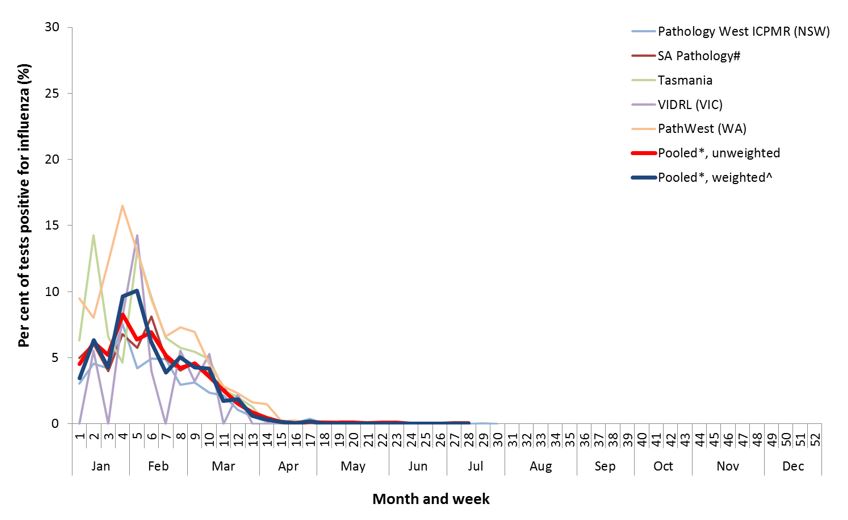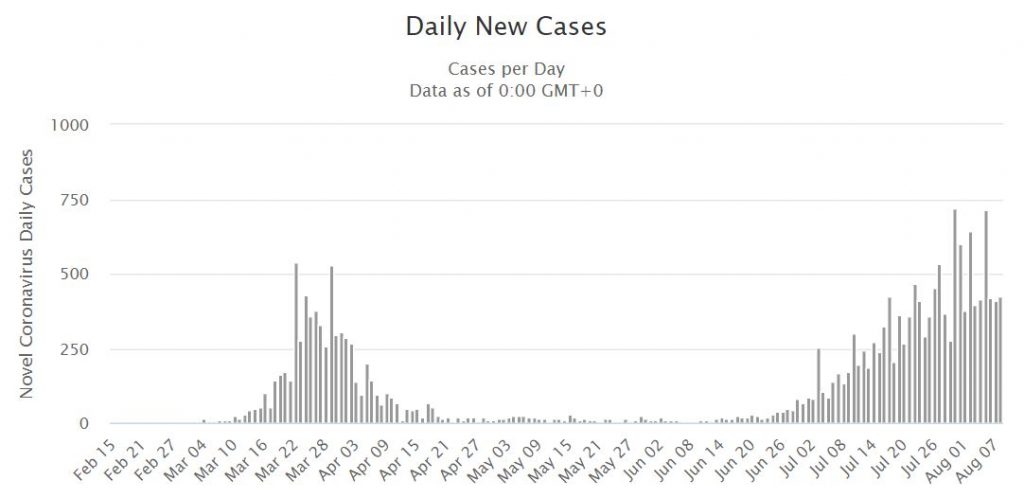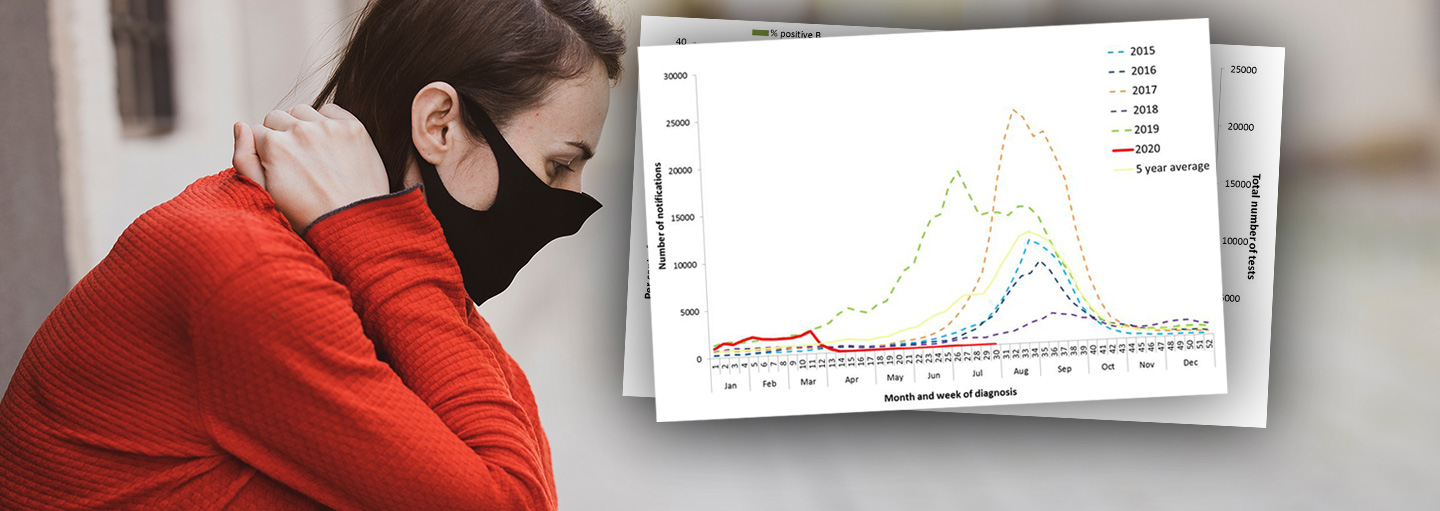The year 2020 has been dominated by the impact of COVID-19. There has been a surge of COVID-19 cases ever since the virus escaped from Wuhan China early in the year. The response from the government has been to implement a range of policies in an attempt to slow the spread of the virus. A curious, but surprisingly unreported phenomenon is that the influenza cases have dramatically fallen while COVID-19 cases have dramatically risen.
This reduction coincides not with the introduction of measures to limit the spread of COVID-19, but rather with the introduction of testing for COVID-19. This suggests that cases of influenza are being counted as COVID-19. A review of the COVID-19 testing procedures shows that they have been subjected to very little quality and accuracy testing, therefore the reliability of the COVID-19 tests is unknown.
This suggests that the COVID-19 testing procedures may not be sensitive enough to distinguish between COVID-19 and regular influenza strains, resulting in large numbers of false-positive results.
The Influenza Statistics
Figure 1 shows the typical seasonal pattern of reported influenza cases in Australia. Cases in the first quarter of the year either hold steady or slightly rise before dramatically rising in the middle of the year during Winter. Comparing the early trends for 2020 and 2019 we see a similar pattern of higher than normal cases up until the middle of March, with 2019 continuing to dramatically rise quite early and higher compared to the typical season.

Figures 2 and 3 shows that while testing for influenza continued to occur, the percentage of cases that returned positive results slowly declined nationally since early February and flatlined by late March.


Having established the typical flu trend, let’s look at the curious disappearance of influenza cases. As can be seen in figures 1, 2, and 3, cases of influenza dropped to near zero in late March and consistently stay at zero even during the peak influenza season during Winter. This is something unprecedented in the statistics and is also represented in all the State’s statistics.
This dramatic reduction to zero is clearly not a natural phenomenon of influenza activity. Rather this trend has all the hallmarks of a problem in the data.
The COVID-19 Statistics
In Figure 4 we see that in early March the COVID-19 cases begin to appear and then dramatically increase by the last half of March. Also, note the second peak in July during the middle of Winter.

Correlation Between COVID-19 and Influenza
In late March the influenza cases disappear (figures 1, 2 and 3) at the exact same time that COVID-19 cases start rising. It is also worth noting that the second peak in COVID-19 cases in late June is also at the exact same time that the seasonal influenza cases typically peak (Figure 1). The COVID-19 trend mimics the seasonal influenza trend so closely that it’s almost as if in March the influenza cases were simply relabelled as COVID-19. If it is true that COVID-19 cases are simply influenza cases, then this COVID-19 trend is exactly what would be expected.
Alternative Explanations
The introduction to the Australian report on 2020 influenza states the following:
“Interpretation of 2020 influenza activity data should take into account, but are not limited to, the impact of social distancing measures, likely changes in health seeking behaviour of the community including access to alternative streams of acute respiratory infection specific health services, and focussed testing for COVID-19 response activities.”
What this is saying is that the decrease in reported influenza cases may be due to the mitigation measures introduced by the State and Federal governments to control the spread of COVID-19. These measures include social lockdown, social distancing, wearing of masks, and increased hygiene practices. While these are all important factors to consider and undoubtedly negatively impact influenza transmission to an extent, these measures would certainly not explain the dramatic disappearance of influenza cases and the continued absence since April. In fact, if we look at Figures 2 and 3 we see that testing for influenza is still occurring but the tests are returning zero positive cases of influenza. So if they are testing for influenza, but the tests are not finding any cases, where are the flu cases? They are definitely still around, because a virus as enduring and virulent as influenza doesn’t just disappear.
A second point that invalidates the Health Department report’s claim is that any factors which cause the reduction of the influenza virus should also cause the reduction of the COVID-19 virus. Clearly this is not the case because at the time when virus mitigation measures are implemented the influenza cases dramatically decline but the COVID-19 cases dramatically increase.
Efficacy of COVID-19 Tests
The Therapeutic Goods Administration (TGA) is responsible for overseeing the quality analysis of COVID-19 test kits and laboratory procedures. Here we see some alarming statements by the TGA that the various COVID-19 tests in use have not undergone quality and efficacy testing. In the political rush to get mass testing done, the TGA has allowed dozens of tests into circulation which they admit “the reliability of COVID-19 tests is uncertain due to the limited evidence base”, and “There is limited evidence available to assess the accuracy and clinical utility of available COVID-19 tests.” If all these tests are unproven then it is entirely possible that the COVID-19 tests are producing false-positive results, meaning the tests are unable to distinguish between the COVID-19 virus and influenza virus strains.
Secondly, regarding testing for COVID-19, 30 out of 37 of the test kits are Chinese made. Considering China is a major strategic enemy that has been caught lying and fabricating data from the very beginning of the COVID-19 pandemic, and their predatory abuse of global medical equipment supplies, it is stunning to see that we are so reliant on their equipment for testing and monitoring of COVID-19.
Further Factors
Firstly, the reduction in influenza cases does not occur at the same time as the implementation of COVID-19 mitigation measures. As seen in Figure 1, the decline of influenza cases occurs in early March, yet mitigation measures were largely only implemented in late March.
This timeframe may seem small, but it makes clear that the disappearance of influenza cases had already occurred before mitigation measures had taken effect. This means that COVID-19 mitigation measures had nothing to do with the reduction in influenza cases.
Secondly, Figure 1 shows that a particular year’s influenza activity is often similar to the previous year. Considering that prior to March the 2020 influenza activity very closely mirrors 2019 at the same time of the year, it is reasonable to assume that the mid-Winter peak of 2020 may have had a similar very high number of cases as 2019.
Conclusion
The disappearance of influenza cases in March 2020 is profound and ubiquitous in Australia. This phenomenon is not discussed in the media, and the cursory statements in the influenza reports regarding this do not offer an adequate explanation.
The decline in influenza cases occurs exactly when testing for COVID-19 began, and the COVID-19 pattern closely mirrors that of the typical influenza seasonal trend. Testing kits for COVID-19 have not been tested for efficacy, therefore it is unknown if they can distinguish between COVID-19 and influenza strains.
Most testing kits are made in China who is a strategical geopolitical enemy of Western countries. All these factors mean that it is entirely possible that the COVID-19 pandemic may be dramatically exaggerated.























You must be logged in to post a comment.